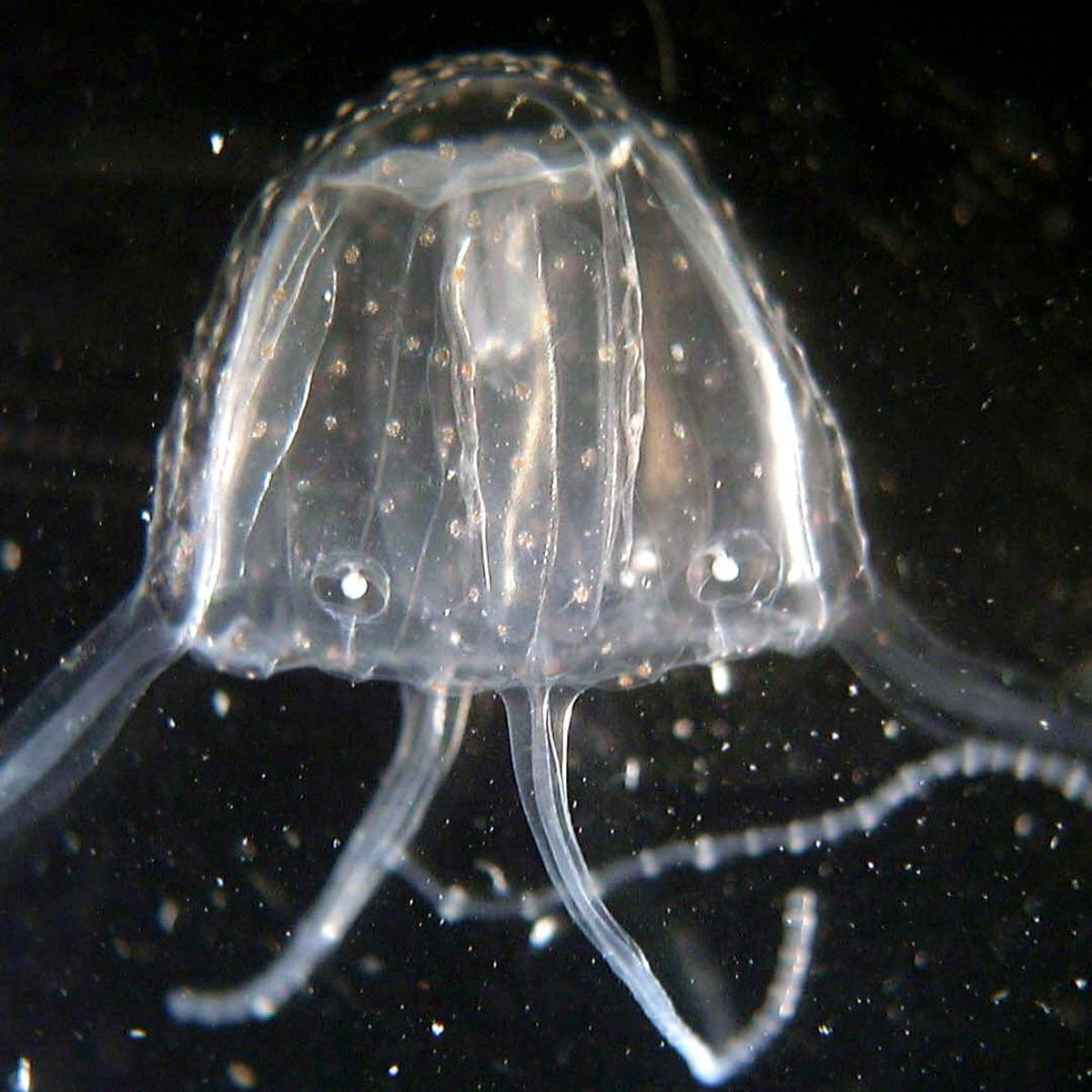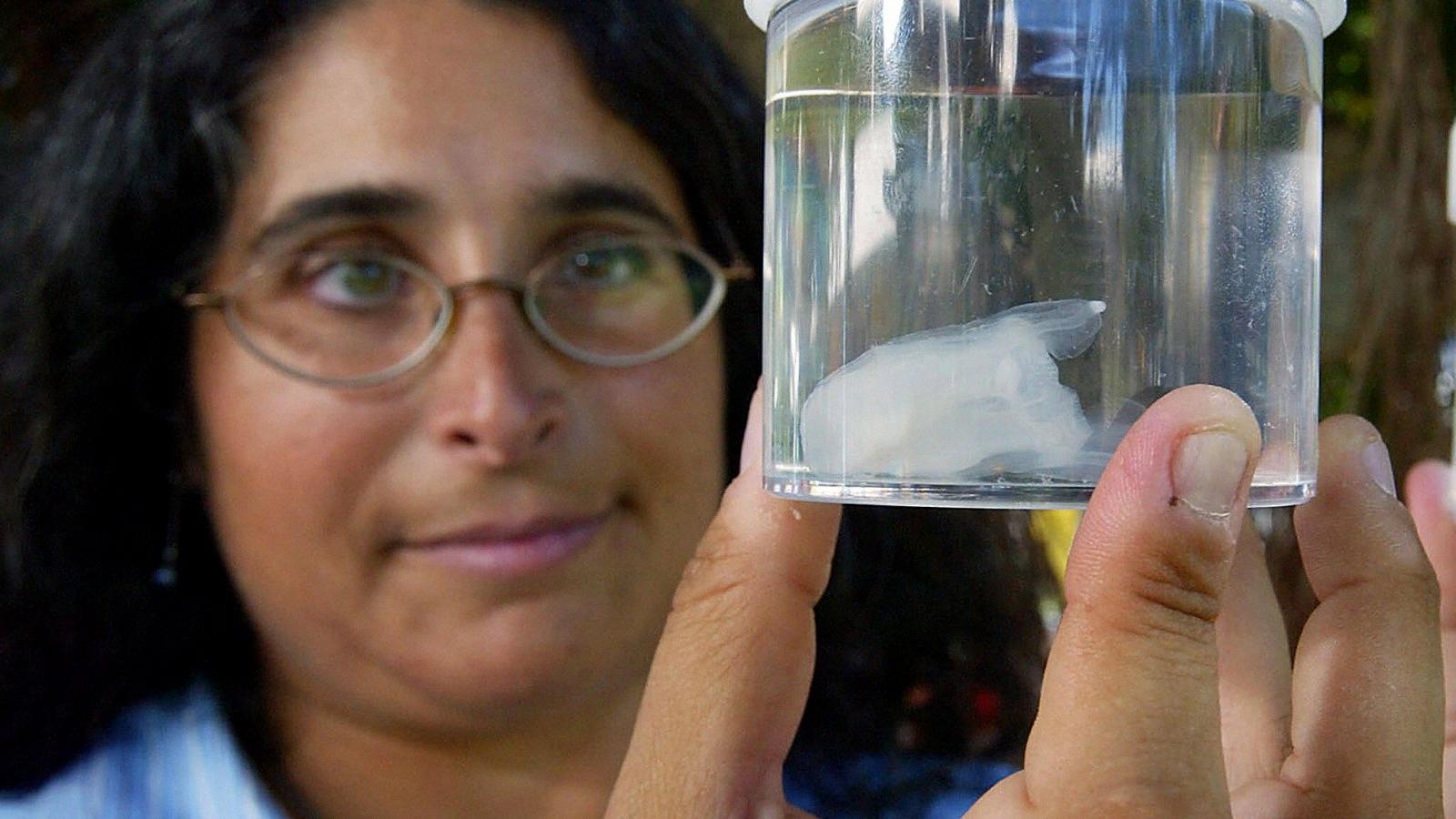If you’re visiting Australia, be aware of the Irukandji Jellyfish – a small and potentially dangerous creature that inhabits Australian waters. The Irukandji is one of the most venomous creatures in the world, and can cause severe pain, muscle cramping, hypertension, and even life-threatening cardiac complications.
The Irukandji jellyfish is native to the northern waters of Australia and is about the size of a thumbnail. Despite its small size, it packs an incredibly powerful sting that can cause extreme pain and suffering in humans who come into contact with it. The jellyfish’s venomous tentacles contain thousands of microscopic barbs that inject venom into its victim when touched.
Symptoms of an Irukandji sting include intense burning pain at the site of contact with the tentacles, followed by nausea, vomiting, sweating, headache, chest or abdominal pain and anxiety. Some victims have also experienced heart arrhythmias or rapid heartbeat as well as dangerously high blood pressure levels.
If you are stung by an Irukandji jellyfish it is important to seek medical attention immediately. Treatment typically involves administering antivenom to reduce symptoms or prevent them from worsening. It is also important to remove any remaining tentacles from your skin as soon as possible to minimize exposure to more venom.
In order to avoid an Irukandji jellyfish sting altogether it’s important to be aware of their presence in Australian waters and take precautions when swimming or diving in areas where they are knwn to inhabit. Wearing a full body suit with long sleeves and pants can help protect against a potential sting while swimming; however if you still find yourself face-to-face with an Irukandji jellyfish it’s important not to panic and move away slowly if possible so as not to agitate it further and increase your chances of being stung.
Knowing how dangerous these jellyfish can be is key in preventing them from causing serious harm this summer season while enjoying Australia’s beautiful beaches!

Source: theguardian.com
Surviving an Irukandji Jellyfish Sting
Yes, you can survive an Irukandji jellyfish sting. While Irukandji jellyfish are among the most venomous creatures in Australia, the vast majority of stings will not be fatal. Most people who have been stung by an Irukandji jellyfish experience pain and nausea whch can last for several days. However, death is rare and can only occur if the sting is left untreated or if there are complications due to pre-existing medical conditions.
In the case of Hannah Mitchell, she was lucky to survive her sting thanks to medical assistance and a quick response from her family. Doctors believe that early recognition of her symptoms and immediate medical care saved her life.
It is important to note that the best way to avoid an Irukandji jellyfish sting is to stay out of the water when they are likely to be present (usually during summer months) and wear protective clothing such as a full-body wetsuit or stinger suit when swimming in waters where these jellyfish may be present.

Source: en.wikipedia.org
The Effects of Irukandji Jellyfish Stings
If you are stung by an Irukandji jellyfish, you may experience a range of symptoms, which can vary in severity. The most common symptoms are intense pain in the affected area, severe muscle cramping, and hypertension (high blood pressure). In some cases, cardiac complications may develop which can be life-threatening. It is important to seek medical attention as soon as possible if you believe you have been stung by an Irukandji jellyfish. Treatment may include pain relief medications and other measures to stabilize your condition.
The Deadliness of the Irukandji Jellyfish
The Irukandji jellyfish is certainly one of the deadliest creatures in Australia, but it is not necessarily the most deadly. While it is true that its venom can cause intense pain, muscle cramps, nausea, vomiting and other serious problems, there are actually a number of other creatures in Australia that have been known to cause fatalities. These include the box jellyfish, stonefish and blue-ringed octopus. Therefore, although the Irukandji jellyfish should not be taken lightly due to its potentially lethal sting, there are other animals in Australia that may be even more dangerous.
The Effects of Irukandji Jellyfish Stings on Mental Health
No, the Irukandji jellyfish does not make you suicidal, though it can cause a sense of impending doom and a desire to die. This potentially life-threatening condition is known as Irukandji Syndrome and is caused by the sting of the jellyfish. While it can be terrifying to experience, it is not typically fatal unless left untreated. Symptoms usally include extreme pain, sweating, nausea, vomiting, and heightened blood pressure. Treatment generally consists of pain relief medication, antihistamines, and possibly intravenous fluids if necessary. Fortunately, while this syndrome can be very serious and uncomfortable to experience, the effects are mostly short-term and do not lead to suicidal ideation or any lasting mental health issues.
Comparing the Severity of Box Jellyfish and Irukandji Stings
Box jellyfish are definitely more dangerous than Irukandji. Although only two confirmed deaths from Irukandji have been reported in Australia, 71 deaths from box jellyfish sting have been recorded since the late 1800s. Box jellyfish can kill a person within minutes and their venom is considered one of the most potent animal toxins in the world. On the othr hand, Irukandji stings usually cause no more than severe pain, nausea, sweating and an increase in blood pressure. Although very painful, these symptoms rarely result in long-term damage or death. Therefore, it is clear that box jellyfish stings are far more severe and potentially fatal than Irukandji stings.

Source: newsweek.com
Dealing with an Irukandji Sting
If you are stung by an Irukandji jellyfish, it is important to seek medical help right away. It is also important to follow the steps outlined below:
1. Wash the sting site with sea water and remove any tentacles that may be left on the skin.
2. Immerse the sting or run hot water on the skin for 20 minutes. Make sure that the temperature of the water is hot enough to provide relief but not so hot that it would burn your skin (around 45 degrees Celsius).
3. Apply a cold compress or ice pack to reduce swelling and pain. Do not apply ice directly to the skin as this culd cause further damage.
4. Take an antihistamine or paracetamol for pain relief as directed by your doctor, pharmacist, or healthcare provider.
5. Seek medical help as soon as possible if symptoms worsen or if you have any concerns about your condition.
The Effects of an Irukandji Sting
Yes, you can feel an Irukandji sting. The sting from the Irukandji jellyfish is usually barely noticeable at first and has been described as feeling similar to a mosquito bite. This is because the jellyfish are very small and the venom is only injected through the tips of their cnidocysts (nematocysts). However, the stings can become more painful over time and may cause burning or prickling sensations. In severe cases, the sting can cause a severe headache, nausea, sweating and muscle pains.
The Pain of Irukandji Jellyfish
The sting of an Irukandji jellyfish is extremely painful and can cause intense physical and psychological distress. The pain is often described as excruciating, with people experiencing six to twelve hours of discomfort. Symptoms can include nausea, vomiting, cramps, profuse sweating and a feeling of impending doom. In some cases, the pain may be so severe that medical attention is needed to help manage it. It is important to remember that although the pain from an Irukandji jellyfish sting can be severe and long-lasting, it is rarely fatal.
Yes, Irukandji stings are very painful. Symptoms of a sting include intense lower back and abdominal pain, headaches, nausea, vomiting and a feeling of impending doom. The pain is often described as excruciating and can last anywhere from 30 minutes to 24 hours. While most people may not experience this level of pain, it is still important to seek medical attention if you have been stung by an Irukandji jellyfish.
Predators of the Irukandji Jellyfish
The Irukandji jellyfish is a dangerous species of box jellyfish native to the waters of Australia. Unfortunately, these jellyfish are largely inedible by most animals due to the potent neurotoxins they contain. However, some ocean sunfish and cerain sea turtles (like the leather back turtle) have been known to consume these jellyfish without any ill effects. These same animals often feed on other species of jellyfish as well, so it is likely that they can digest Irukandji without any problems. In addition, researchers have also found that certain species of fish such as barracudas and mackerel may be able to tolerate the venomous sting of Irukandji jellyfish.
Despite the fact that some animals can eat Irukandji, it is still important to remember that these jellyfish are highly venomous and should be avoided at all costs by humans and other creatures alike.
The Likelihood of Being Stung by an Irukandji
The chances of getting stung by an Irukandji in Australia are incredibly slim. Out of the millions of “people days” spent each year in the Great Barrier Reef waters, only around 100 Irukandji stings occur in Queensland that require medical treatment. This figure is relatively small considering the large number of people who visit the reef and enter its waters annually. Most people who come into contact with Irukandji jellyfish don’t get stung at all, or if they do it is a mild sting that doesn’t require medical attention. The best way to reduce your chances of being stung is to wear protective clothing such as a full body wetsuit while swimming in the ocean. Additionally, be sure to stay away from known Irukandji habitats such as shallow areas with submerged objects like rocks, coral and seaweed were they are more likely to be found.
What Do Irukandji Jellyfish Feed On?
The Irukandji jellyfish is a species of small, box-shaped jellyfish native to tropical waters in the Indian and Pacific Oceans. When young, they feed on small invertebrates such as zooplankton and small crustaceans. As they mature, their diet expands to include small vertebrate fish. To capture their prey, Irukandji jellyfish use their tentacles lined with thousands of stinging cells which inject venom into their prey. Once they have captured their food, they eat it using their mouth located at the center of its bell-shaped body.
Conclusion
In conclusion, the Irukandji jellyfish is an incredibly dangerous creature that inhabits the waters of Australia. It is responsible for the painful and potentially lethal condition known as Irukandji syndrome, which can cause severe pain, muscle cramping, hypertension, and life-threatening cardiac complications. Despite its danger, Hannah Mitchell has miraculously survived a sting by the Irukandji jellyfish and serves as a reminder that with proper safety precautions and medical attention when necessary, these deadly creatures can be managed.












